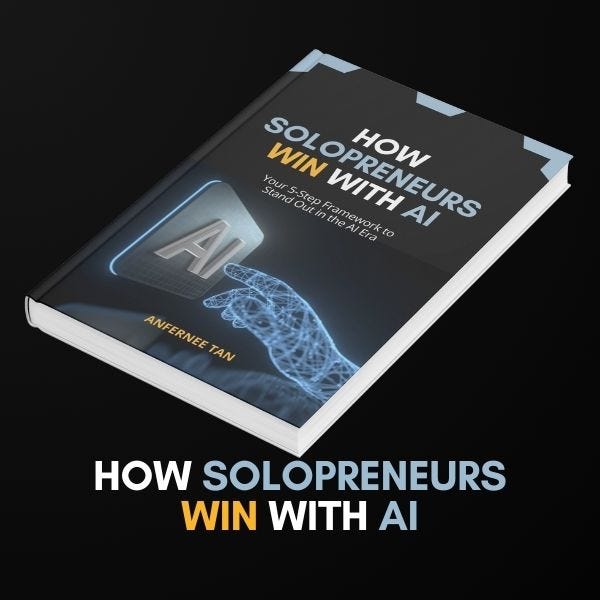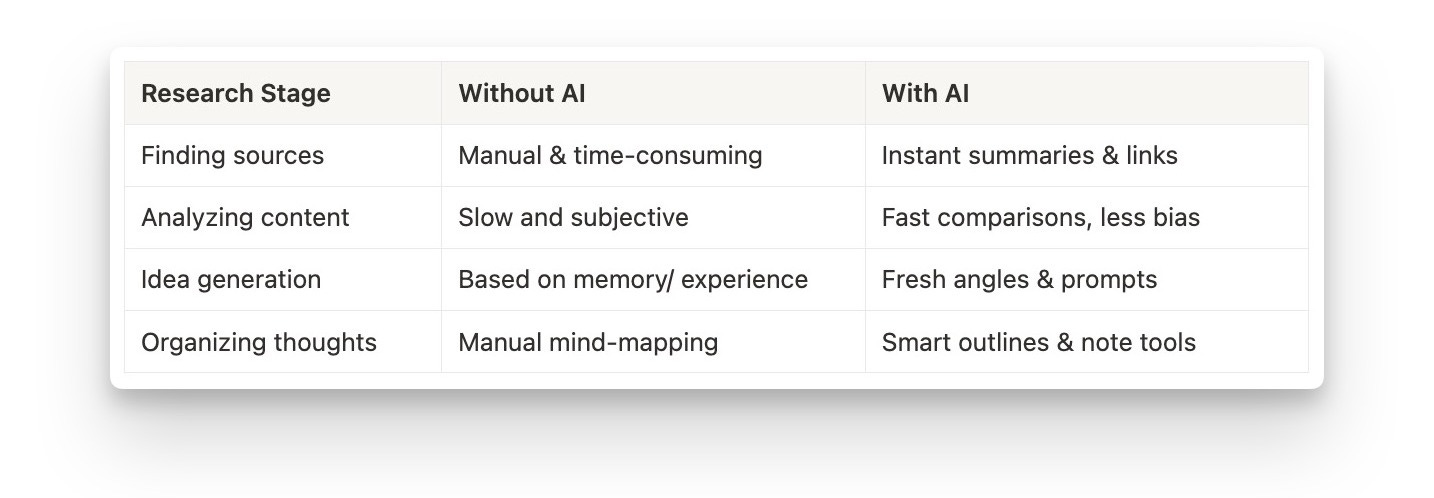🤖 AI Prompt - How to Research Effectively in the Age of Distraction: With and Without AI
Drowning in data? Here are some practical, human-friendly strategies to sharpen your research game.
Access your FREE Solopreneur Success Hub - your subscribers-only comprehensive command center for building and scaling a successful one-person business.
I created this all-in-one toolkit for building a profitable one-person business, something I wish existed when I first started, and it saves me 20+ hours a week.
Now, it’s yours. No Opt-In Required.
More information about the Hub here.
Let’s face it.
We’re living in an age where distractions are baked into every tap, swipe, and scroll.
Information is everywhere, but clarity?
That’s in super short supply.
This post explores:
Why modern research is harder than ever
How to conduct effective research without AI
How to supercharge that process using AI (including a ready-to-use mega prompt!)
Practical steps to sharpen your thinking and avoid overwhelm
Pitfalls to avoid in both methods
Whether you’re a student, creator, entrepreneur, or just plain curious, this post is your compass for navigating today’s chaotic sea of information, with or without machine help.
The Problem of Distraction and Info Overload
Here’s the thing, we’re not just distracted.
We’re drowning in information.

Our brains are getting pulled in ten directions at once:
Social media notifications
Infinite scrolls of semi-useful content
15 open tabs “you’ll get back to, but never…”
Misinformation disguised as expert advice
AI-generated content that’s often shallow or repetitive
This mess creates what researchers call “cognitive fatigue” where your brain feels busy, but your progress is meh.
The result?
We confuse activity with productivity.
We skim, we click, we forget.
Actual learning?
Real insight?
They’re getting lost in the noise.
How to Research Effectively Without AI
Good old human-powered research isn’t dead, it’s just underused.
Well, I wouldn’t do it either in this modern AI times, but if you really have no choice…
Here’s how to do it right:
1. Start with a Clear Problem Statement
What exactly are you trying to understand?
Why does it matter?
Who has tackled this before?
Write it down.
Clarity starts on paper.
2. Go Deep, Not Wide
Choose 3–5 authoritative sources, not 20 random blogs
Look for books, academic papers, industry white papers
Use Google Scholar, JSTOR, and even your local library’s digital database
3. Use the Feynman Technique
If you can’t explain it simply, you don’t understand it.
Read and then write it in your own words (most important!)
Imagine explaining it to a curious 12-year-old (most important!)
Review and Refine
Test and Archive
4. Organize Your Notes Logically
Use tools like:
Notion (yeah! Notion!)
A good old-fashioned notebook
Group your notes by theme, not by source.
5. Reflect Before Acting
What patterns are emerging?
What assumptions did you have going in?
What questions remain?
This “pause and ponder” phase is where insight lives. They really work!
How AI Helps You Stay Focused
Unlike humans, AI doesn’t get tired, bored, or distracted.
Used wisely, it helps you:
Summarize long texts instantly
Generate counterpoints to challenge your thinking
Find blind spots in your argument
Suggest next-step questions you may not think of
⚡ Bonus: You can even copy/paste your entire notes into a prompt and ask the AI, “What am I missing?”
How Solopreneurs Win with AI
A Creator’s Playbook for the Human-Centered Business
Build a scalable brand that reflects your voice, not the algorithm.
Discover how to focus, systemize, and create meaningful digital work with AI as your creative co-pilot.
How AI Can Turbocharge Your Research (When Used Wisely)
Now here’s the twist… AI.
Especially when treated like a personal research assistant, can help you move faster and think deeper.
Gaps in Traditional Research vs. AI-Augmented Research
3 Alternative Approaches to Modern Research
Here are some hybrid strategies you can mix and match:
1. Human First, AI Second
Start by reading a book or paper.
Then feed your notes to AI and ask for missing angles or counterpoints.
I use Google NotebookLM a lot for this.
2. AI First, Human Filter
Let AI create a research brief.
Then you go verify and dig deeper into the best leads.
3. Split-Session Strategy
Use 25 minutes of pure human focus (Pomodoro style), followed by 10 minutes of AI-assisted summarizing, then back to manual analysis.
Steps to Implement a More Effective Research Process
Define your research goal clearly
Use 2–3 trusted human sources upfront
Summarize key insights in your own words
Input those insights into AI to get gaps & next steps
Organize info with tools like Notion or Obsidian
Reflect, challenge assumptions, revisit sources
Turn findings into something useful: a blog, outline, pitch, etc.
Potential Pitfalls to Watch Out For
AI hallucinations: Always verify facts; AI can sound confident and still be wrong.
Overreliance: Don’t let AI do all the thinking, you still need to reflect.
Shallow skimming: AI-generated summaries aren’t replacements for deep reading.
Confirmation bias: AI can mirror your assumptions. Ask it to challenge you.
Here’s how using a specialized prompt structure like the one below can elevate your game:
Prompt You Can Use:
Keep reading with a 7-day free trial
Subscribe to The Solopreneur Code to keep reading this post and get 7 days of free access to the full post archives.







